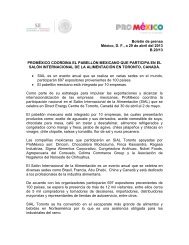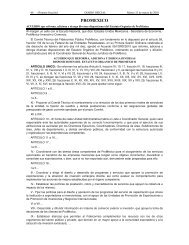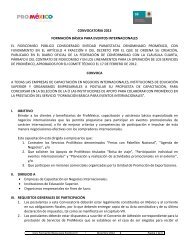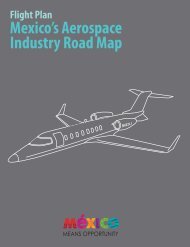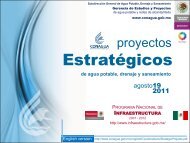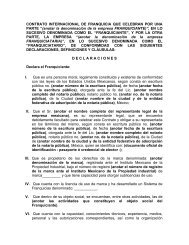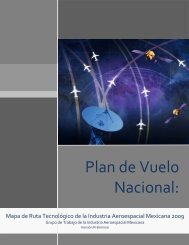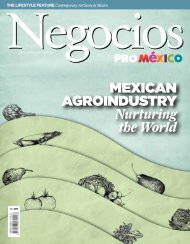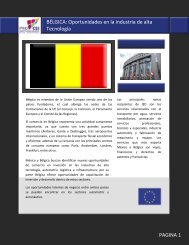mexico renews itself - ProMéxico
mexico renews itself - ProMéxico
mexico renews itself - ProMéxico
Create successful ePaper yourself
Turn your PDF publications into a flip-book with our unique Google optimized e-Paper software.
66 Negocios ProMéxico | The Lifestyle Negocios ProMéxico | The Lifestyle 67<br />
City on a<br />
Thread<br />
Walking the Tightrope<br />
with Betsabée Romero<br />
La ciudad en un hilo (City on a Thread) opened at the Mycellium<br />
Ingenium Gallery on the 51st floor of the Torre Mayor in Mexico City<br />
on June 21, 2012. Featuring around 80 pieces, several of which were<br />
created expressly for the exhibition, this is the first solo showing by<br />
contemporary Mexican artist Betsabée Romero. In interview with<br />
Negocios, she talks about her dreams, the meaning of her work, and the<br />
path taken by her career.<br />
____<br />
by paola valencia<br />
photos courtesy of ludens<br />
Betsabée Romero is one of Mexico’s more internationally<br />
renowned contemporary artists. Born in Mexico City<br />
in 1963, her “urban” discourse and choice of materials<br />
like cars and tires is to be expected from someone raised<br />
in one of the largest cities in the world. With over 90 exhibitions<br />
under her belt, Romero’s work belongs to over a dozen prestigious<br />
collections in Mexico and abroad. In the US, the cities of Los Angeles,<br />
San Diego and New York have been very receptive to her work,<br />
which has also received critical acclaim in countries like Spain,<br />
France, Australia, Colombia, Argentina and Brazil.<br />
The migratory movements of mankind and today’s breakneck<br />
pace of life are some of the themes explored in her work.<br />
—Cars and tires are two words that inevitably crop up<br />
when talking about your work. What meaning do you<br />
attach to them and how would you define your work?<br />
Cars and tires are the tools of my trade. I view them as icons of<br />
modernity, as elements of an international language. As for my<br />
work, although my style is often described as “very Mexican”, I do<br />
not think contemporary art should be labeled in this way. I think<br />
my work is an interpretation of urban living and its contradictions.<br />
I also like to broach topics like borders and migration. It is<br />
all related to the movements of mankind: Why do we emigrate?<br />
How do we get around? I think cultures can largely be defined by<br />
their migratory patterns.<br />
Julián Zugazagoitia once said I was a very “glocal” artist and I<br />
guess it’s not a bad term to define me because I believe you have<br />
to work on both fronts: locally and globally.<br />
—How did you come to adopt these materials?<br />
In 1997 I was invited to InSite Tijuana-San Diego, a biennial that<br />
does not exist anymore –which is a shame since, in my view, it<br />
was one of the most important biennials on the international<br />
scene. Being a part of it changed the mood of my work because I<br />
realized I had grown up in a very built up, central area of Mexico<br />
City, full of mechanics’ workshops and piles of tires. In Tijuana I<br />
saw a lot of scrap yards full of tires and I got to thinking about all<br />
those tires just sitting there when they were meant to be on the<br />
move. That is when it occurred to me I could use them as icons of<br />
modern living.



